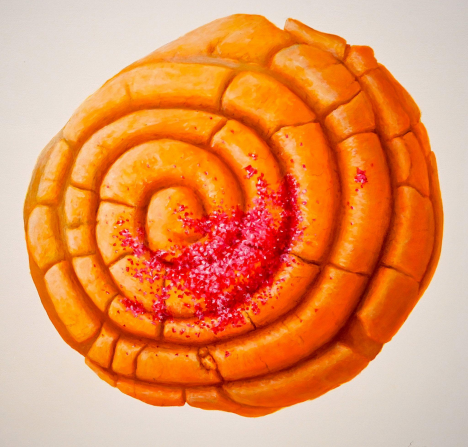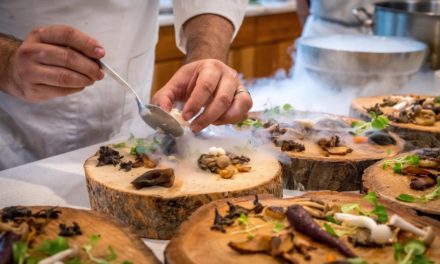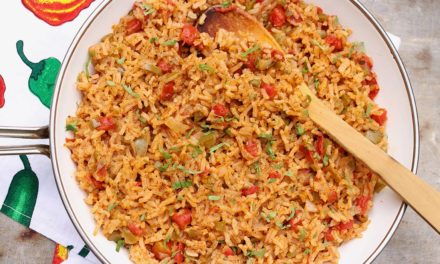The “Art of SA Eats” exhibit, which opened this week at the McNay Art Museum in San Antonio, is a feast for the eyes. Those familiar with Mexican American popular breakfast breads, as well as paletas, shaved ice drinks, and candy desserts will not be disappointed at the colorful renderings and film portrayal of these foods and sweet goodies. The curators invited us to view the local culinary wonders with these words: “Here, [in the Frost Octagon exhibit hall] “five San Antonio artists explore the city’s culinary landscape through paintings, photographs, sculpture, and video.”
I am quite familiar with three of the five artists, Chuck Ramirez, Ana Fernandez, and Eva Marengo Sanchez. I am also very familiar with Eddie Hayes, the McNay lead curator for this beautiful show.
Hayes, a native of San Antonio and I met 20 years ago. Like Mrs McNay, Hayes studied art at the Art Institute of Chicago, but true to his calling as a curator rather than an artist, he polished his curating skills at the Latin American Art Museum in Long Beach, California. Hayes, a new member of the art curating team at the McNay, credits Rene Barilleaux for contributing many insights to the fabulous paintings of Ana Fernandez and Eva Marengo Sanchez, as well as Chuck Ramirez’ photography.
After the Spanish conquest of Mexico in 1521, the Spaniards relied mainly on Aztec and Mayan dishes, which were prepared with local fruits and vegetables, primarily nopales, [cactus] beans, maize, [corn] tomatoes, chiles, avocados, and bananas. The Mexican Indians also ate deer, turkey, and fish, and their drinks included coffee and maguey juices.
While the Spaniards introduced various dishes of beef, lamb, goat, and pork, they also brought the first white flour to the Americas. Spanish cooks prepared flour tortillas and various Mexican breads such as pan dulce [pastries]. Pan dulce is popular in the central and northern regions of Mexico and it was influenced not only by the Spaniards but also by the French cooks who came with the conquering armies of Maximillian in the mid-1800s. The popular bolillo, or white flour bread rolls, are an example of the French contribution to Mexican bakeries.
Before the chain grocery stores started selling these popular Mexican bakery products, every Mexican American neighborhood had its panaderia [Mexican bakery] There were three Mexican bakeries within 100 yards on both sides of my first home on Guadalupe Street on the Westside of San Antonio when I was growing up. Ours was not a typical neighborhood. We lived on a busy commercial sector of the Westside and the local businesses served a large section of the community, thus a large number of Mexican bakeries.
Eva Marengo Sanchez highlights one of the most popular breads of the panaderia–the pan de huevo also known as tortuga, concha, or mollete. Her pan Mexicano art–in its brilliant color and amazing texture appearance–momentarily opens our visual and taste senses to everyday culinary wonders. It is also a commentary about our food connection to Mexico, and to the European adaptation of Mexican American culture. The foods Latinos often eat have a cultural reference to Spanish, Mexican Indigeneous groups, and the Mestizo population.
Certain foods such as pan dulce are popular in Mexican American communities of the United States. Sanchez chose to paint the pan de huevo, [Bread made with egg and flour], which comes in a circular shape and is baked in assorted colors.
Adjacent to the Sanchez pan dulce paintings are four marvelous Chuck Ramirez photographs of Mexican candies. Although the McNay Museum has previously included Ramirez in several exhibits, I continue to marvel at how little we know about this talented San Antonio individual. His life as an artist began in the late 1990s, when he quit his job as a brand designer for a San Antonio grocery chain in order to devote full time to the art of photography.
Ramirez’s big break came in the years 2001-2002 when he had shows in Portland, Santa Monica, and New York City. In addition, Ramirez was selected as a 2002 International Artist in Residence by ArtPace in San Antonio. In his dessert and candy art, Ramirez evokes “a sense of taste,” according to Frances Colpitt. Writing about some of his earlier food photography, Colpitt offers that, “the imagery of food, drink, and candy could have been mouthwatering, but Ramirez was more concerned with conveying a sensibility–a style and a lifestyle– than a perceptual sense.” After the tragic cycling death of Ramirez in 2010, the Patricia Ruiz-Healy Gallery took charge of his estate and handled the sale and exhibit of his art.
In another section of the Frost Octagon exhibit hall, Ana Fernandez introduces McNay visitors to her video about Mexican food preparation, highlighting the art of making and selling raspas, ice cream, paletas, fruit cups and fruit drinks. Her colorful video clips show Fernandez and her team making and delivering these cold drinks and treats via her food truck, mostly during the San Antonio hot summer months. In addition, the video shows Chamoy City Limits, another food project of Fernandez. She is a talented artist, and her sense of color and visual presentation are evident in her artful food creations.
The “Art of SA Eats” is a delightfully fun show with works also by Steven Cromwell and Ben Ortiz. The show opened at the McNay Museum of Art on August 4, and will continue until January 23 2022.
San Antonio Artists Blend Latino Food and Culture












